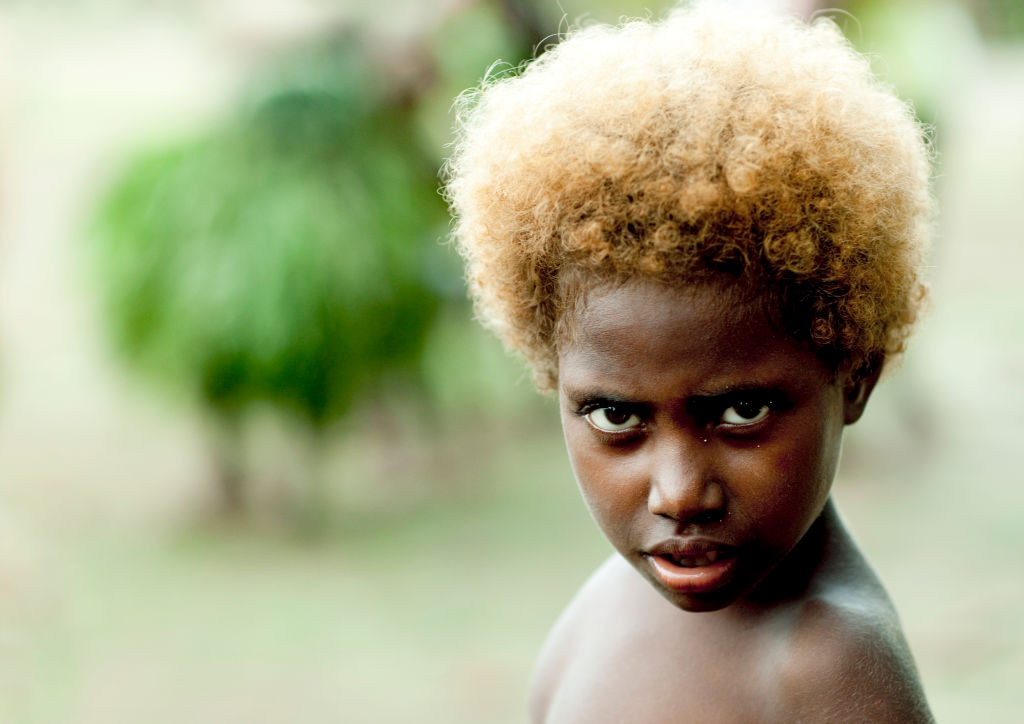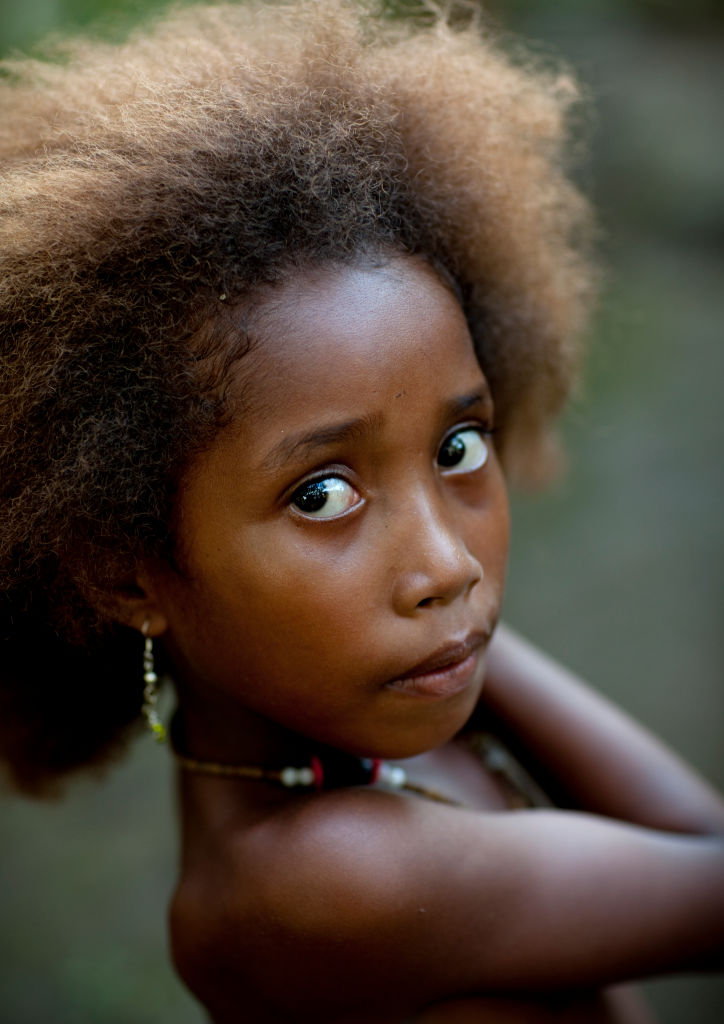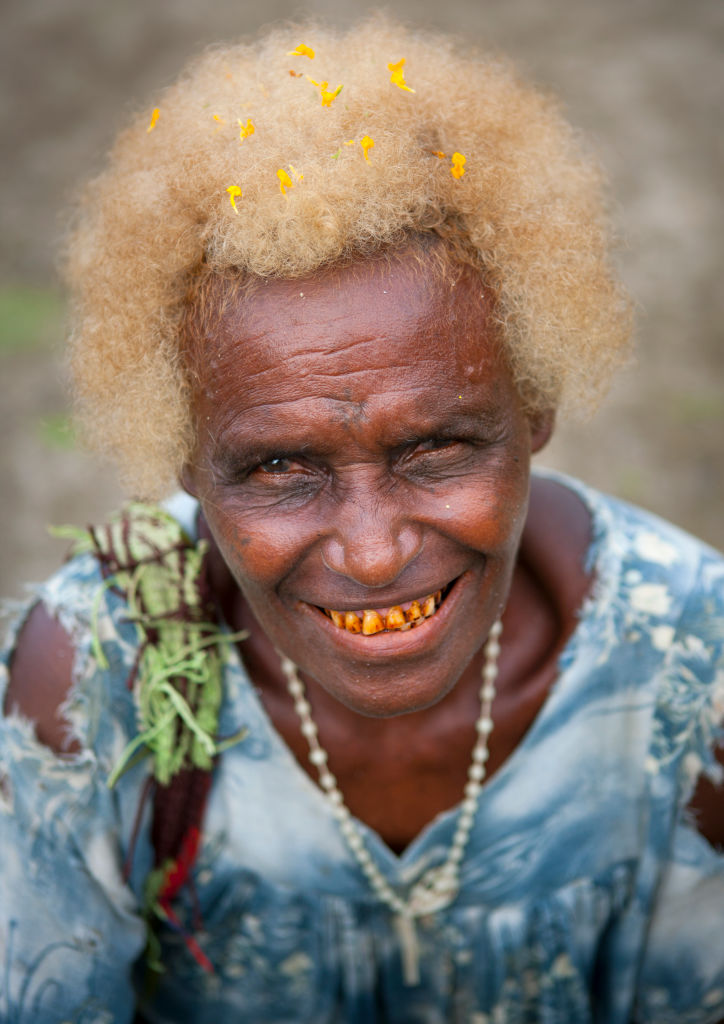
Source: Eric Lafforgue/Art in All of Us / Getty
UPDATED: 2:00 p.m. ET, May 19, 2024 —
May is National AANHPI Heritage Month and NewsOne is proud to recognize Asian American and Native Hawaiian/Pacific Islanders. One of those culturally forgotten communities is the Melanesian People and their unique-looking Black people with Blonde hair.
We’ve seen famous celebs like Nicki Minaj and Ciara rock blonde weaves and extensions. They look good doing it too, but can Black people naturally be born with blonde hair? The answer is yes. The Melanesian People, a black community from the Solomon Islands, have become a scientific phenomenon over the last decade due to their bright blonde hair. Here’s what we know so far about the extraordinary indigenous group.
MORE: The Origins Of Black People With Red Hair
The Melanesian people are native to the Solomon Islands, a cluster of islands located in the South Pacific just Northeast of Australia, Papua and Vanuatu.
There are several theories about Melanesian people’s bright blonde hair. Some researchers believe that the indigenous group developed the unique feature from sun and salt whitening. Other scientists point to the group’s high intake of fish. Some historians believe that the Melanesians may have inherited their blonde hair from cross-breeding with European settlers, traders, and explorers who visited the island.
In 2012, researchers from the Stanford University School of Medicine dove deeper into the scientific reason behind the Melanesian’s blonde hair attribute.
Carlos D. Bustamante, a genetics professor at Standford, sought to find the gene responsible for the unique trait. He and a team of researchers collected DNA data from several participants on the island. They assessed hair and skin color using a light reflectance meter. They also took blood pressure readings and measured heights and weights, according to Stanford Medicine. Then, the research team asked participants to spit into small tubes to provide saliva for DNA extraction. In a span of a month, Bustamante and his team collected over 1,000 samples.

Source: Eric Lafforgue/Art in All of Us / Getty
TYPR1 is the gene responsible for the unique trait
To gain a better understanding of their findings, researchers compared the data they collected from 43 blonde Solomon islanders to 42 dark-haired islanders. Researchers discovered the blonde participants carried two copies of a mutant gene, called TYRP1, which is present in 26% of the island’s population. TYRP1 stands for tyrosinase-related protein 1, an enzyme previously found to influence pigmentation in mice and humans.
Further research revealed that the rare gene was exclusive to people from the Solomon Islands and absent in the genomes of Europeans. Many people assumed that the blonde hair of Melanesia was the result of gene flow — a trait passed on by Europeans, but this is not the case, according to researchers.
“The human characteristic of blond hair arose independently in equatorial Oceania. That’s quite unexpected and fascinating,” Kenny, a postdoctoral scholar in Bustamante’s lab said of the exciting results. Bustamante echoed similar sentiments, noting how the result was monumental for studying the genetics of isolated populations.
“If we’re going to be designing the next generation of medical treatments using genetic information and we don’t have a really broad spectrum of populations included, you could disproportionately benefit some populations and harm others,” he added.
Around 5% to 10% of Melanesian people have blonde hair. The gene appears to be more prevalent in younger people across the Island. Researchers believe that when some Melanesians get older, their bright blonde hair begins to fade to a darker hue. This could explain why many adult Melanesians tend to have darker hair.

Source: Eric Lafforgue/Art in All of Us / Getty
Melanesians are descendants of the first Homosapiens
Blonde hair isn’t the only interesting fact about the Malensians. In 2007, a genetic study led by scholars at Cambridge and Anglia Ruskin Universities found that the Melanesian population was related to the first group of Homosapiens that emigrated from Africa 2,000 generations ago.
Academics analyzed the mitochondrial DNA and Y chromosome DNA of Aboriginal Australians and Melanesians from New Guinea. They compared the data with various DNA patterns associated with early humans.
“The results showed that both the Aborigines and Melanesians share the genetic features that have been linked to the exodus of modern humans from Africa 50,000 years ago,” the University of Cambridge noted of their findings. “These settlers replaced other early humans (such as Neanderthals), rather than interbreeding with them.”

Source: Peter Cade / Getty
This post was originally published on this site be sure to check out more of their content.







